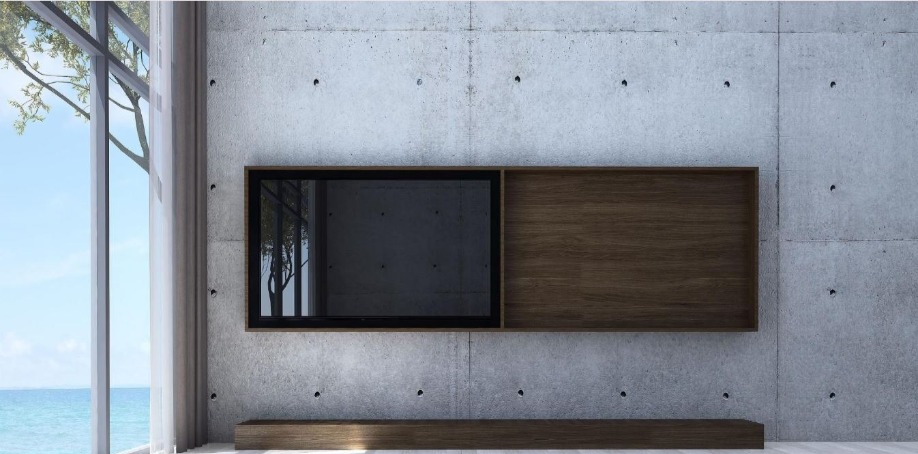
The travel and hospitality industries offer an infinite number of opportunities for AV over IP. Whether its a lobby video wall or the TV in a private room, displaying high-definition audio visual programming is a necessity in airports, hotels, resorts and transportation centers.
Still, these markets present their own challenges. For one, clientele in hotels, resorts and airports represent a range of demographics. AV systems in these locations should be flexible enough to suit everyone's needs. They also need to be powerful enough to handle the ongoing influx of traffic.
Here's what AV providers should know about solutions on the market uniquely suited to meet the hospitality market's needs.
Selling to an Untapped Market
Some AV vendors are wary of selling to the hospitality industry, explains Production Audio Video Technology product manager David Di Muzio.
“While they are high volume sales, they only want low-cost product. Manufacturers need to sell thousands of these low-cost items to get the same return as if they were doing a convention centre space requiring one or two high-end systems.”
While this may seem like a detriment, it could be a benefit to vendors who are willing to negotiate with hospitality businesses. According to Almo's Apryl Lamberti, these relationships give vendors an opportunity to expand networks, diversify products and create a more robust product offering.
Plus, the opportunities for large-scale solutions in the travel and hospitality industry are growing. Airports could benefit from digital wayfinding, for example, while hotels could benefit from screens displaying tourist opportunities.
Reaching out to this new market can open up new possibilities in the AV industry. But that means understanding what these businesses actually want, need and expect. First, stakeholders might not understand what AV over IP systems actually entail. They may confuse it with ordinary internet streaming or wifi. In turn, they may not see the direct benefit to their organization.
Audinate senior product marketing manager Brad Price says that this distinction is essential.
“When streaming AV content from web services, such as Netflix or Spotify, there's no 'realtime' consideration and delays may be arbitrarily large. In contrast, AV-over-IP systems work with large numbers of channels in strict synchronisation, and time delays are well below levels of human perception.”
Taking time to communicate these concerns will help mitigate any issues when planning. Additionally, the resolution of the video is very important, whether for digital signage in lobbies or live feeds in conference rooms. As DVIGear president Steven Barlow explains, high-resolution video (up to 4K) without any image degradation is absolutely essential both in high-end installations and situations where users are close to the screen.
“In both cases, compressed AV-over-IP solutions simply don't provide the quality required by hotel applications. Instead, it's important to use an uncompressed AV-over-10GbE architecture, such as DisplayNet, which enables zeroframe latency and zero compression artifacts.”
He adds that checking these boxes will ensure the very best experience for both guests and presenters. Knowing what technology hospitality clients need will ensure that providers can both answer common questions and develop lucrative partnerships.

Pitching AV over IP to Hospitality Clients
While each hospitality client will have unique needs, AV over IP has special capabilities which make it perfect for the industry. However, the most important step in communicating these benefits may be quelling concerns about AV over IP. According to Hospitality Technology, finding a trusted vendor may help the process run more smoothly.
“Major commercial AV manufacturers with a history of stability and a reputation for quality products have committed to this future and to improving the technology further. There is no longer a reason to give pause. AV over IP is a technology whose time has come.”
If you take the time to allay any fears that the client has, you'll be able to sell them on not only the benefits of AV over IP, but the necessity of it.
In fact, some consider networked AV the only obvious solution for hospitality. “When the Tulalip Resort Casino wanted to extend digital signage throughout its property, Kramer AV over IP was the only realistic solution,” said Chris Kopin, VP of Technology at Kramer US. “Today, the TRC has a high-performance AV over IP network that meets all of their digital signage needs—and then some.”
For example, SDVoE Alliance president Justin Kennington stresses the importance of the AV integration industry needing to evolve their perception of AV distribution. “The problem is this market has sort of got this segmentation in their head of, well, sometimes I need a matrix switch and sometimes I want AVoIP, and we don't want to be stuck over in that bucket,” he said.
More technical considerations should also be discussed. “Due to the central role network switches play, most AV-over-IP systems will require a higher-end solution. This isn't the time to just grab the cheapest switch at the local discount store; it's not going to handle the video traffic or have the features needed to properly manage the network. A managed Layer 2 or Layer 3 switch is almost always required,” says John Epeneter at AVTechnology.
When pitching AV over IP to the hospitality industry, flexibility is another core benefit.
“AVoIP is a big step forward for the industry in that it allows projects to get away from large, centrally-distributed solutions, while still fulfilling the need to support immense flexibility in signal routing,” writes Josh Srago at Commercial Integrator.
This flexibility means that AV over IP solves the common pain points of growth and expansion over time. It ensures that a hotel or resort can continue to grow in scale and scope.
“Even when the make, model, number, location and distance of displays is set in stone, who is to say that it will not change in the years to come? Is the customer's investment then wasted? Unfortunately, the answer is often yes. Expensive upgrades make for very awkward conversations,” says product manager James Meredith.
Practicality aside, AV over IP also provides more compelling and memorable visual experiences. In places like a casino or resort lobby, this flash factor matters.

Hospitality Businesses Using AV Over IP
Using real-world examples of successful hospitality projects can help uncertain clients realize the value of this technology.
For example, Hong Kong International Airport used Matrox AV-over-IP platforms to stream airport traffic activity. Originally, they were having issues with the delivery and performance of the video. But AV over IP was able to remove these struggles, while still remaining cost-effective. Now, the airport can stream up to Full HD 1080p60 video and audio at low, adjustable bit rates between 100Kbps and 25Mbps.
“By delivering high-quality, low-bandwidth video content between the airport tower and Education Path aviation gallery, the new exhibition replicates the true, up-close air traffic controller experience HKCAD was looking for.”
Hotels have also benefited from AV over IP solutions. At the Westin Perth in Australia, an extensive AV network brings music and video to the entire luxury location. Stokes Technologies systems engineer Aaron Mitchell designed the system.
“It's a complete AV-over-IP solution, with more than 700 channels of audio, of which 300 channels flow through Attero Tech encoders and decoders. Mood music players provide background music through Attero Tech unD41-L flange-mount interfaces, and the network uses several types of Attero Tech encoders and decoders to route audio to and from virtually all public spaces.”
Small hotels can also benefit from customized AV over IP solutions. Round Group Audiovisual Engineering associate Marc Bauwens chose AV over IP for a vintage-inspired designer boutique hotel in Belgium.
“We wanted a system that blended into the architecture, and they certainly didn't want visible wires and big black boxes hanging everywhere. That led us down the path of networked audio,” adds Bauwens.
This inconspicuous installation involves subwoofers built into wooden cabinets and discreet loudspeakers lining the stairwell, bar and seating areas.
Using successful examples of AV over IP solutions in your pitch can help you create beneficial relationships in the hospitality industry.
Images by: Graham Oliver/©123RF.com, Teeraphan Pensupha /©123RF.com,Antonio Guillem/©123RF.com


